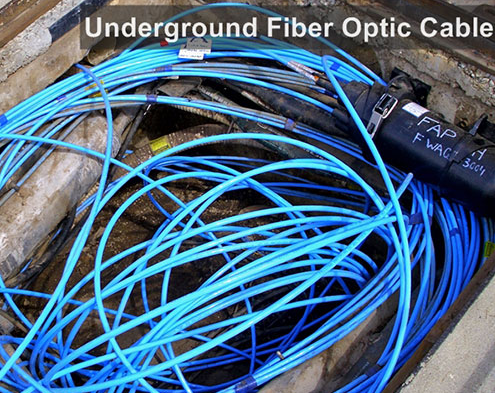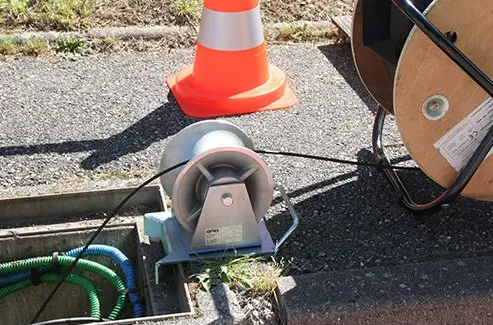The burial depth of the direct-buried optical cable shall meet the relevant provisions of the engineering design requirements of the communication optical cable line, and the specific burial depth shall meet the requirements in the table below. The optical cable should be naturally flat on the bottom of the ditch, and there must be no tension and vacancy. The width of the artificially excavated ditch bottom should be 400mm.

Direct Buried FIber Optic Cables
At the same time, the laying of buried optical cables should also meet the following requirements:
1. The radius of curvature of the direct buried optical cable should be greater than 20 times the outer diameter of the optical cable.
2. Optical cables can be laid in the same ditch as other communication optical cables. When laying in the same ditch, they should be arranged in parallel without overlapping or crossing. The parallel clear distance between cables should be ≥ 100mm.
Table of minimum clear distance between directly buried communication lines and other facilities.
3. When the direct-buried optical cable is parallel to or crossed with other facilities, the distance between them shall not be less than the provisions in the above table.
4. When the optical cable is laid in areas with large terrain fluctuations(such as mountains, terraces, dry ditches, etc.), it should meet the specified requirements for buried depth and radius of curvature.
5. The “S” shape should be used for laying on slopes with a slope greater than 20° and a slope length greater than 30m. When the optical cable trench on the slope is likely to be washed by water, measures such as blockage reinforcement or diversion should be taken. When laying on a long slope with a slope greater than 30°, it is advisable to use a special structure optical cable (usually a steel wire armored optical cable).
6. The mouth of the direct buried optical cable passing through the protection tube should be tightly sealed.
7. A protective tube should be installed where the directly buried optical cable enters the man (hand) hole. The optical cable armor protection layer should extend to about 100mm from the previous support point in the manhole.
8. Various signs of direct buried optical cables should be installed according to the design requirements.
9. The protection measures for directly buried optical cables passing through obstacles should meet the design requirements.
Backfill should meet the following requirements:
1. Fill fine soil firstly, then ordinary soil, and do not damage the optical cables and other pipelines in the trench.
2. After backfilling 300mm of fine soil for optical cables buried in urban or suburban areas, cover them with red bricks for protection. Every time about 300mm of backfill soil should be compacted once, and the remaining soil should be cleaned up in time.
3. The optical cable ditch after the back soil is compacted should be flush with the road surface on the road surface or the brick sidewalk, and the back soil should not have any depression before the road surface repair; the dirt road can be 50-100mm higher than the road surface, and the suburban land can be about 150mm higher.
When the micro-groove optical cable on the road surface is needed, the cable groove should be cut straight, and the groove width should be determined according to the outer diameter of the laid optical cable, generally less than 20mm; The depth should be less than 2/3 of the thickness of the road surface; the bottom of the cable groove should be flat, without hard sills (steps), and there should be no debris such as gravel; the corner angle of the groove should meet the requirements of the radius of curvature after the cable is laid. At the same time, the following requirements also need to be followed:
1. Before laying the optical cable, it is advisable to lay 10mm thick fine sand at the bottom of the trench or lay a foam strip with a diameter similar to the width of the trench as a buffer.
2. After the optical cable is put into the groove, buffer protection material should be placed on the top of the optical cable according to the different characteristics of the pavement restoration material.
3. The restoration of the pavement should meet the requirements of the road authority,and the pavement structure after restoration should meet the service function requirements of the corresponding road section.

Original Source: https://www.gl-fiber.com/news/how-to-lay-direct-buried-optical-cable
Media Contact
Company Name: Hunan GL Technology Co.,Ltd.
Contact Person: Media Relations
Email: Send Email
Phone: 0731-89722704
Country: China
Website: https://www.gl-fiber.com/
